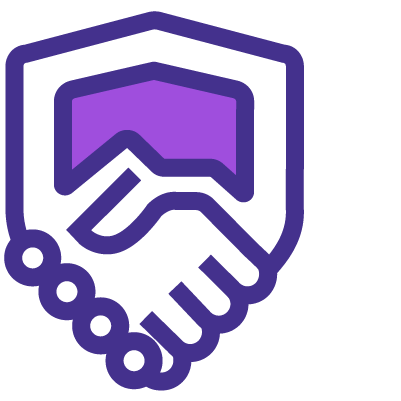ISO 27002 Lead Auditor Training Course Outline
Module 1: Introduction to ISO 27002
- What is Information Security?
- Why is Information Security Needed?
- How to Establish Security Requirements
- Assessing Security Risks
- Selecting Controls
- Information Security Starting Point
- Critical Success Factors
- Lifecycle Considerations
- Difference between the ISO 27001 and 27002
- Relation between the ISO 27001 and 27002
Module 2: Scope, Terms and Definitions
- Scope
- Terms and Definitions
Module 3: Structure of ISO 27002 Standard
- Clauses
- Security Categories
- Control
- Implementation Guidance
- Other Information
Module 4: Risk Assessment and Treatment
- Assessing Security Risks
- Treating Security Risks
Module 5: Audit Plan and Process
- Audit Plan
- Preparing for an Audit
- Audit Process
- Planning
- Notification
- Opening Meeting
- Fieldwork
- Report Drafting
- Management Response
- Closing Meeting
- Final Audit Report Distribution
- Follow-Up
Module 6: Internal Auditor
- Understanding an Internal Auditor (IA)
- Internal Auditing Process
- Requirements for Internal Auditors
- Internal Auditor Vs External Auditor
- Benefits of an Internal Auditor (IA)
Module 7: ISMS Audit
- Introduction
- Principles
- Audit Management
- Auditing Process
- Competence and Evaluation of Auditors
Module 8: Cybersecurity Auditing
- What is Cybersecurity Audit?
- How It Helps Organisation?
- Cybersecurity and the Role of Internal Audit
- Cyber Risk and Internal Audit
- Third Line of Defence
- Cybersecurity Assessment Framework
Module 9: Information Security Audit
- What is IT Security Audit?
- Benefits
- Types
- Approach Based
- Methodology Based
- Importance
- How to Conduct an IT Security Audit?
- Roles and Responsibilities of Information Security Auditor
- Basic Duties List
- Roles and Responsibilities on the Job
Module 10: Information Security in Project Management
- Project Management
- Attributes Table
- Purpose of Control 5.8
- Meet Requirements
- Differences Between ISO 27002:2013 and ISO 27002:2022
Module 11: Components of Information Security
- Confidentiality
- Integrity
- Availability
- Authenticity
- Non-Repudiation
Module 12: Information Security Risk Management (ISRM)
- Introduction
- Stages
- Identification
- Assessment
- Treatment
- Communication
- Rinse and Repeat
- Ownership
- Process Owners
- Risk Owners
Module 13: Control and Compliance
- Security Controls
- Importance of Compliance
- Legal Requirements for Information Security
- Information Technology Compliance
- Improved Security
- Minimised Losses
- Increased Control
- Maintained Trust
- Information Security Compliance Standards
Module 14: Management Responsibilities
- Control 5.4 Management Responsibilities
- What is an Information Security Policy?
- Attributes Table
- Purpose of Control 5.4
- Implementation Guidelines
Module 15: Competence and Evaluation of Auditors
- Auditor Competence
- Field
- Changes to ISO27 and Other Standards, Guidelines
- Legal and Regulatory Changes
- Business and Organisational Changes
- Technology Changes
- Demonstration of Auditor Competence
Module 16: Lead Auditor
- What is Lead Auditor?
- Roles of Lead Auditor
- Planning Phase
- Audit Phase
- Audit Report
Module 17: Conformity Assessment
- What is Conformity Assessment?
- Need of Conformity Assessment
- Conformity Assessment and Standards
- Types of Conformity Assessment
Module 18: Themes and Controls
- Control Type
- Information Security Properties
- Cybersecurity Concepts
- Operational Capabilities
- Security Domains
- Control Layout
Module 19: Organisational Controls
- Policies for Information Security
- Information Security Roles and Responsibilities
- Segregation of Duties
- Management Responsibilities
- Contact with Authorities
- Contact with Special Interest Groups
- Threat Intelligence
- Information Security in Project Management
- Inventory of Information and Other Associated Assets
- Acceptable Use of Information and Other Associated Assets
- Return of Assets
- Classification of Information
- Labelling of Information
- Information Transfer
- Access Control
- Identity Management
- Authentication Information
- Access Rights
- Information Security in Supplier Relationships
- Addressing Information Security within Supplier Agreements
- Managing Information Security in the ICT Supply Chain
- Monitoring, Review, and Change Management of Supplier Services
- Information Security for Use of Cloud Services
- Information Security Incident Management Planning and Preparation
- Assessment and Decision on Information Security Events
- Response to Information Security Incidents
- Learning from Information Security Incidents
- Collection of Evidence
- Information Security During Disruption
- ICT Readiness for Business Continuity
- Legal, Statutory, Regulatory, and Contractual Requirements
- Intellectual Property Rights
- Protection of Records
- Privacy and Protection of PII
- Independent Review of Information Security
- Compliance with Policies, Rules, and Standards for Information Security
- Documented Operating Procedures
Module 20: People Controls
- Screening
- Terms and Conditions of Employment
- Information Security Awareness, Education, and Training
- Disciplinary Process
- Responsibilities After Termination or Change of Employment
- Confidentiality or Non-Disclosure Agreements
- Remote Working
- Information Security Event Reporting
Module 21: Physical Controls
- Physical Security Perimeters
- Physical Entry
- Securing Offices, Rooms, and Facilities
- Physical Security Monitoring
- Protecting Against Physical and Environmental Threats
- Working in Secure Areas
- Clear Desk and Clear Screen
- Equipment Siting and Protection
- Security of Assets Off-premises
- Storage Media
- Supporting Utilities
- Cabling Security
- Equipment Maintenance
- Secure Disposal or Re-use of Equipment
Module 22: Technological Controls
- User Endpoint Devices
- Privileged Access Rights
- Information Access Restriction
- Access to Source Code
- Secure Authentication
- Capacity Management
- Protection Against Malware
- Management of Technical Vulnerabilities
- Configuration Management
- Information Deletion
- Data Masking
- Information Deletion
- Data Masking
- Data Leakage Prevention
- Information Backup
- Redundancy of Information Processing Facilities
- Logging
- Monitoring Activities
- Clock Synchronisation
- Use of Privileged Utility Programmes
- Installation of Software on Operational Systems
- Networks Security
- Security of Network Services
- Segregation of Networks
- Web Filtering
- Use of Cryptography
- Secure Development Life Cycle
- Application Security Requirements
- Secure System Architecture and Engineering Principles
- Secure Coding
- Security Testing in Development and Acceptance
- Outsourced Development
- Separation of Development, Test, and Production Environments
- Change Management
- Test Information
- Protection of Information Systems during Audit Testing
 To help and support our clients we are providing a limited number of 250 daily discount codes. Hurry, first come, first served!
To help and support our clients we are providing a limited number of 250 daily discount codes. Hurry, first come, first served!



























 If you wish to make any changes to your course, please
If you wish to make any changes to your course, please


